As soon as the holidays are over, many streets turn into Christmas tree graveyards as people drag their trees to the curb for recycling.
If you live in a town that collects dead Christmas trees with your yard waste bin, you know these trees eventually end up as mulch once they go through the local composting facility.
But did you know you can do the same thing yourself with very little effort?
In fact, you can do so many things with an old Christmas tree (whether it came from an urban tree lot, a Christmas tree farm, or even a national forest if you cut down your Christmas tree in the wild) that it would not be weird at all to ask your neighbors if you can have their old trees!
If you managed to keep your Christmas tree alive for several weeks but notice the needles dropping more frequently overnight (a sign that it’s drying out and no longer absorbing water), it’s time to take it down. But don’t throw it out just yet!
Related: Why Inner Conifer Needles Turn Yellow or Brown in Fall: An Evergreen Anomaly
A dead or dying Christmas tree still has a lot of usefulness after the ornaments are put away. Save the boughs to mulch your garden beds, make kindling for your next backyard bonfire, or upcycle the wood into countless craft and DIY projects.
All you need is a saw, a pair of pruners or loppers, and space to make a mess while you hack off the branches and cut up the trunk.
Read more: Best Pruning Shears—Reviews and Buyer’s Guide
If that sounds like too much work, just keep it as is and move it outside to create your own bird sanctuary or wildlife habitat.
None of this has to be done right away (because hello, we just survived the holidays). You can simply stash the tree in your yard to repurpose later—even if it’s months later.
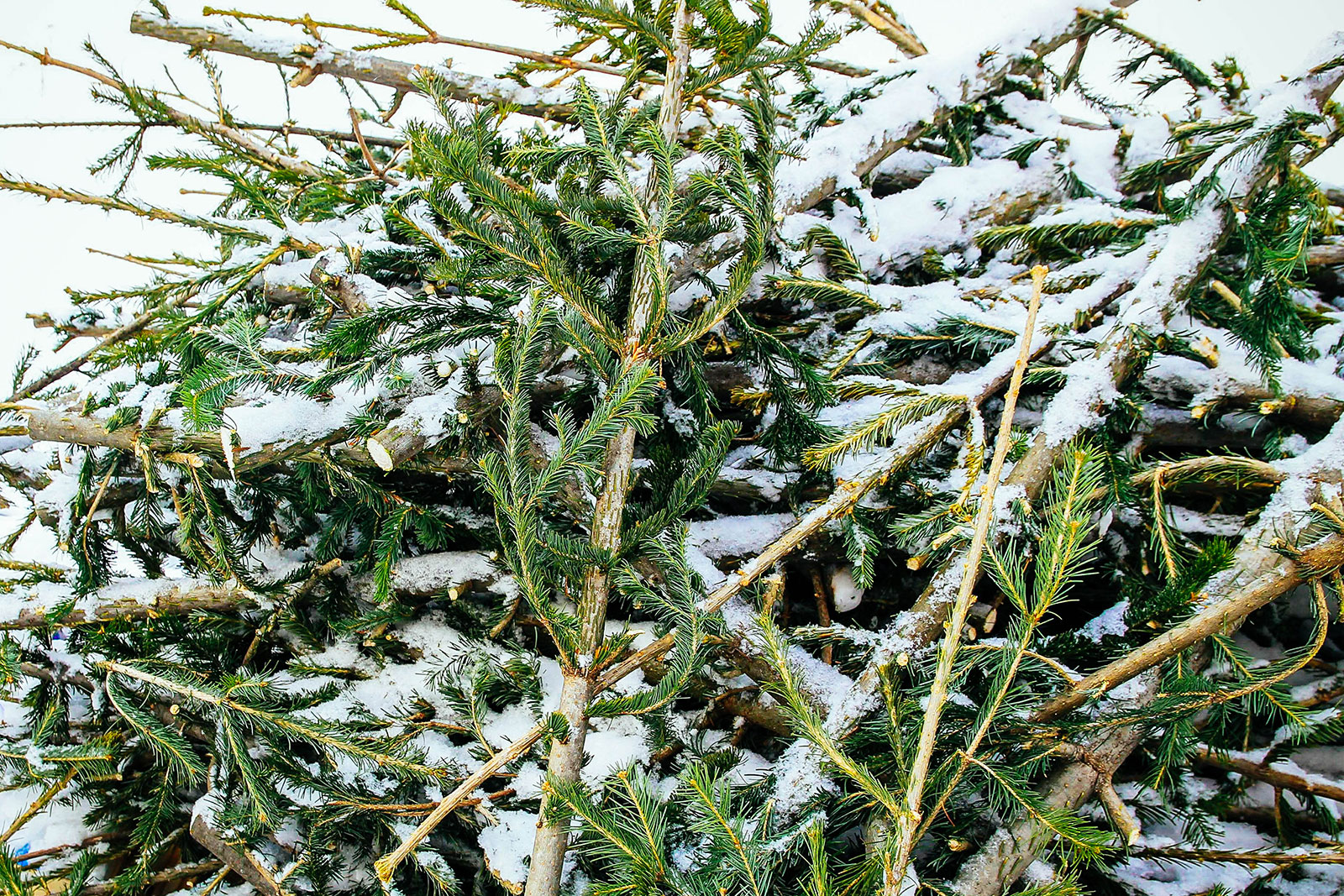
What to do with an old Christmas tree
1. Compost your Christmas tree.
If you didn’t go with a potted living Christmas tree for the holidays, the most obvious way to give new life to an old tree is to add it to your compost pile. But instead of tossing tree parts into your compost bin all at once, there’s a better way to take advantage of all that organic matter.
First, cut the tree into smaller chunks and gather them into a pile in your yard. Let the pile sit until the pine needles have fallen off and the branches are dry and brittle. Then, use these brown materials as a carbon source for your compost bin, as needed.
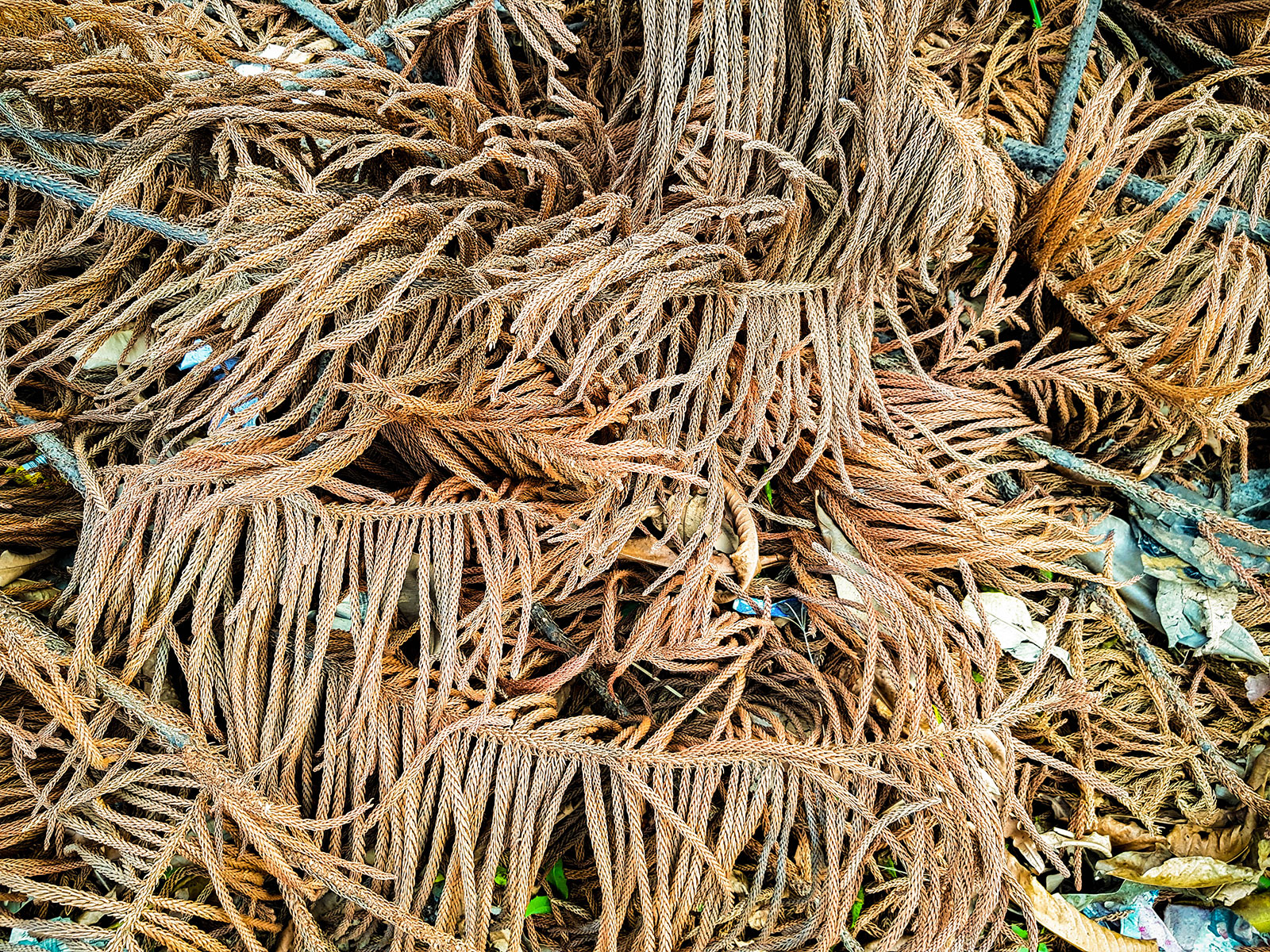
Why do it this way? Because in winter, brown materials are harder to come by but you’re still producing vegetable scraps from the kitchen.
Most people don’t have a big enough stockpile of dried leaves, woody debris, or straw to supplement all their eggshells, fruit peels, vegetable ends, and other green scraps.
By saving the pine needles and branches from your dead Christmas tree, you can add brown and green materials in the proper 2:1 ratio to your compost all season long. This helps the compost break down faster and keeps the pile from smelling bad or turning sludgy (a common problem in winter).
2. Mulch perennial beds with the boughs.
Cut off the boughs and layer them on your perennial garden beds as a natural mulch to protect the roots and prevent frost heaving. The branches are an excellent alternative to straw or wood chips, and will break down slowly over winter, adding nutrients to the soil for spring.
They’re heavy enough to not blow away in winter storms, yet still allow delicate new shoots to poke through once the weather warms up. I like to mulch my overwintering garlic patch with my old Christmas garlands, as well as my asparagus bed and flower beds.
Related: Lazy Gardening: 11 Time-Saving Tips for Getting More Out of Your Garden By Doing Less
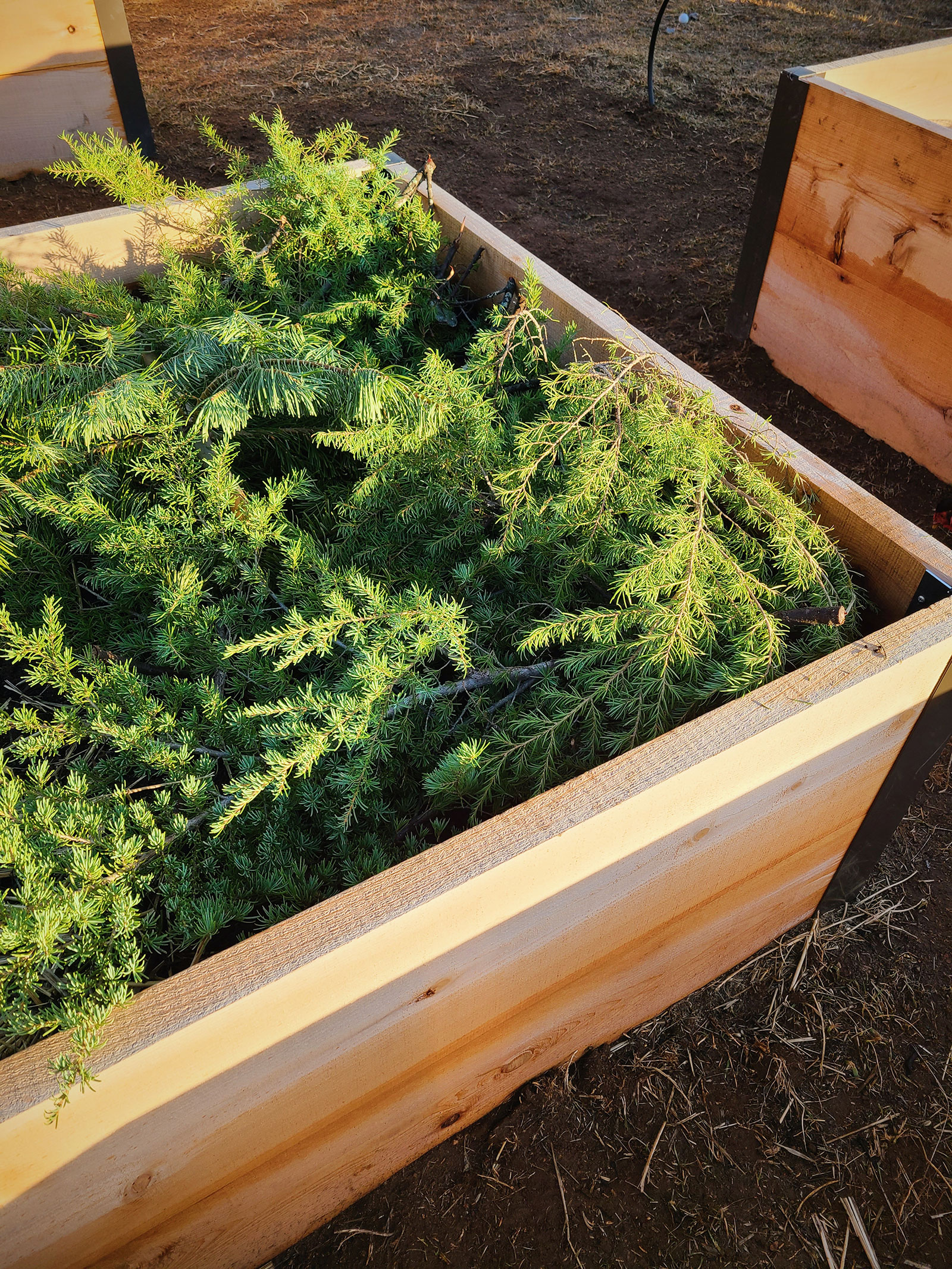
Contrary to popular belief, pine needles will not acidify your soil, so there’s no need to worry about using pine needles (also called pine straw) as mulch.
While it’s true that pine needles have a pH of 3.2 to 3.8 (neutral is 7.0) when they drop from a tree, the acidity is neutralized by soil microbes during decomposition.
Even if you dug freshly fallen pine needles into the soil right away, you might see a slight drop in pH, but this change would not be damaging to plants (nor would it benefit acid-loving plants like blueberries and rhododendrons).
3. Chip the wood for garden paths and beds.
Wood chips are one of the best choices to fill in garden paths, smother weeds, and mulch your beds.
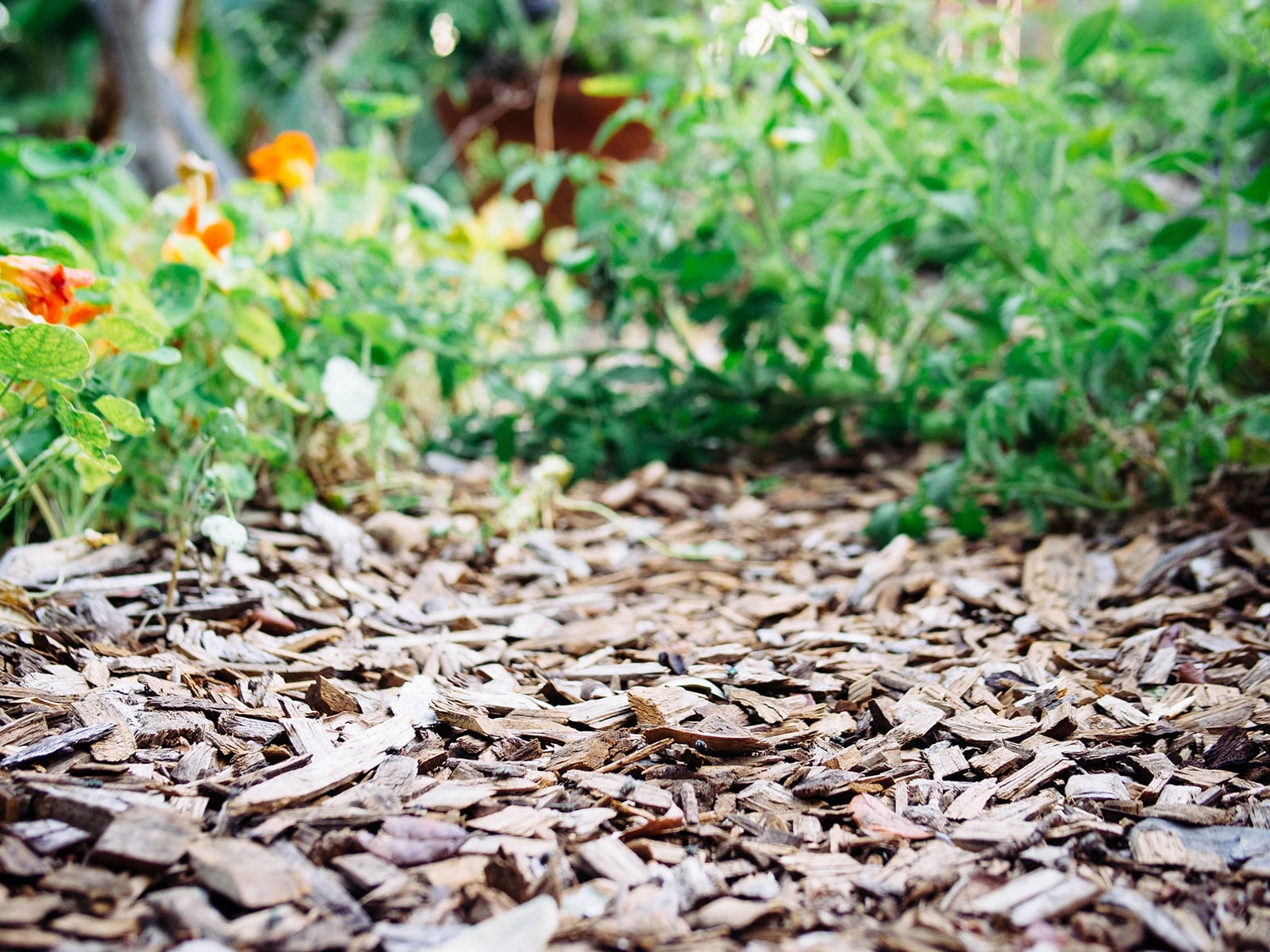
In fact, a thick layer of wood chips (up to 6 inches deep) is far more effective for killing weeds than a sheet of plastic. Wood chips block sunlight while still allowing water and air to circulate through, so the soil food web stays intact. When you rake the wood chips aside to plant, you’ll have healthy soil that’s benefited from all the nutrients in the decomposing wood.
If you want to use wood chips for mulching a garden bed, a 1- to 2-inch layer is all that’s needed for controlling weeds, conserving moisture, and preventing soil from splashing up onto leaves.
If you own a wood chipper, run the trunk and branches through a chipper to create your own organic mulch. No more buying it by the bag or hoping a landscaper will drop off a free load of chips in your driveway!
You can even go in with a few neighbors and rent a chipper for the weekend to chip everyone’s dead trees. Once you’ve got a good pile, distribute the chips for everyone to use in their gardens.
4. Place the tree outside and turn it into a bird sanctuary.
After taking all the decorations off your tree, move it outdoors (still in the tree stand) and create your own bird sanctuary (or bird hotel, as I like to call it). You can hang bird feeders and suet cages from the branches, or even a birdhouse or two.
Related: Simply Perfect Hummingbird Food Recipe: Why You Should Always Make Your Own
Once spring rolls around and birds have more food sources available, you can compost the tree or use the now-dried wood for kindling or crafting.
5. Turn your tree into a wildlife habitat.
If refilling bird feeders isn’t your thing, you can still nurture the mini ecosystem in your yard by turning your old tree into a wildlife habitat. Simply drag it outside to an out-of-the-way spot in your garden and let it sit for the winter, on its side.
(Side note: If you have chickens, leaving your tree—or parts of your tree—in their run is a good way to help them beat winter boredom. Several of my neighbors also toss their old trees to their goats, which love to devour them.)
Read more: 7 Surefire Tips and Tricks for Keeping Your Chickens Healthy Through Winter
The branches help attract and protect birds, squirrels, chipmunks, snakes, and other wildlife that might otherwise have a hard time finding shelter in leafless trees and snow drifts.
By keeping them cozy in your old Christmas tree, you keep the local wildlife from making themselves at home in your attic, garage, or basement.
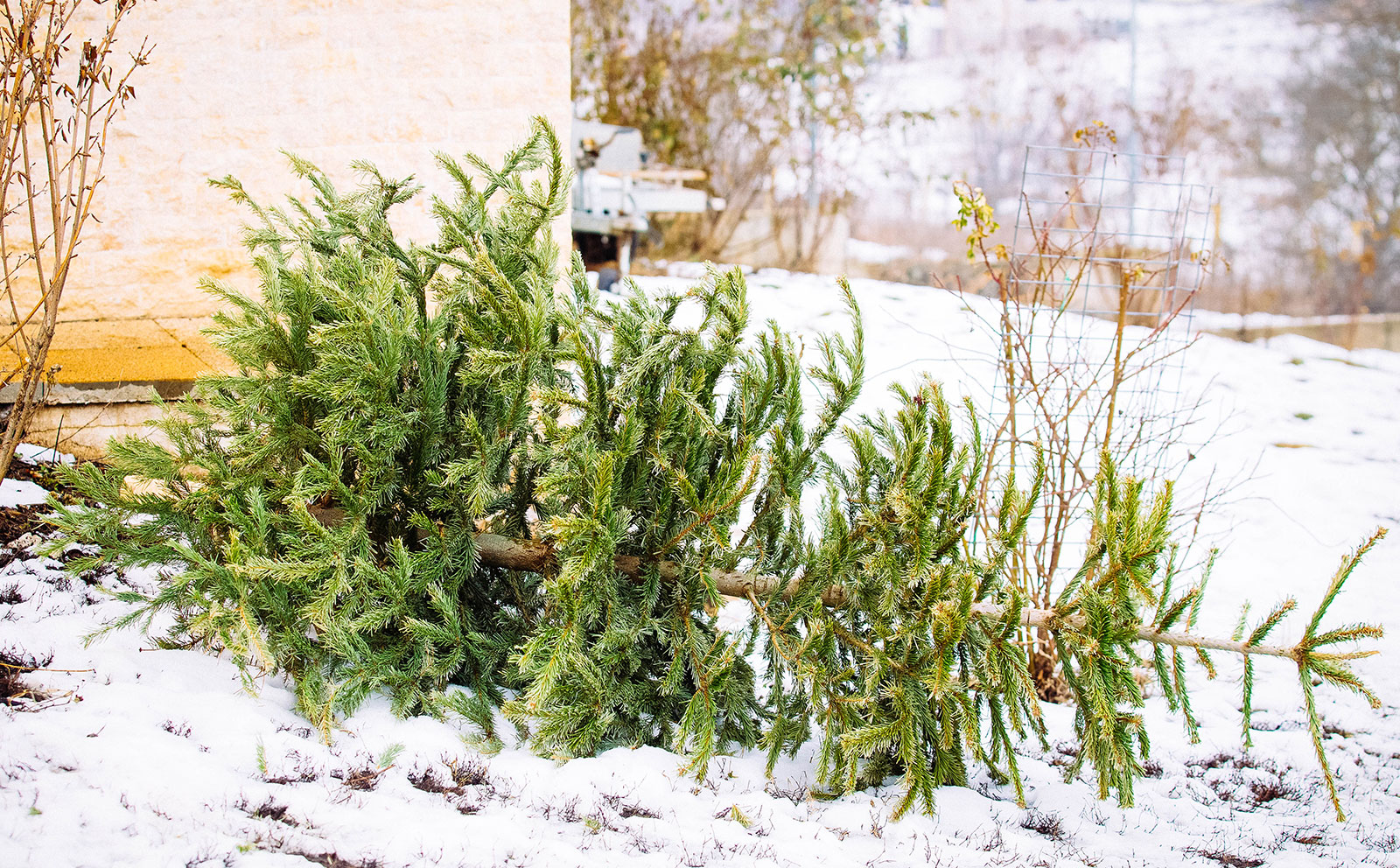
Decaying wood and plant matter is also an important source of food for insects and microbes, so think of that dead tree as life—not waste.
6. Use branches as simple supports for plants.
Strip the sturdiest branches of their needles and cut them into various lengths to use as plant stakes. They’re handy for supporting houseplants, vegetable seedlings, and young plants in the garden.
These small stakes are also useful for protecting tomatoes and other seedlings from dreaded cutworm damage in spring. Placing a small stick against the stem keeps the cutworm from wrapping itself around the stem and chewing on your plant.
The “stick trick” is highly effective for this type of pest control, and having a stash of stakes on hand will ensure you win that battle every time.
Related: Grow Tomatoes Like a Boss With These 10 Easy Tips
7. Use your old tree as firewood.
Your Christmas tree is great fuel for an outdoor fire pit. Use the twigs and needles as kindling, and cut the trunk into logs for burning.
If you want to burn your tree in an indoor fireplace or woodstove, make sure it’s properly seasoned first so it doesn’t make a sticky, sooty mess in your chimney.
There’s a common misconception that pine shouldn’t be burned indoors because it creates excessive creosote build-up, but pine is perfectly acceptable (though not the most efficient) as firewood, as long as it’s been seasoned. (So save the wood to use next winter.)
8. Make your own pot feet.
Pot feet, or pot risers, elevate an outdoor plant container to provide drainage, reduce pest infestations, provide air circulation around the pot, and curb ugly water stains on a porch, patio, or deck.
You can buy pot feet in a number of different materials, including terra cotta, limestone, or plastic, or you can make your own by sawing your Christmas tree trunk into 1- to 2-inch-thick rounds to place under your pots.
You only need three or four pot feet underneath each container, and since they’re so easy to make (not to mention free), you can keep a nice supply on hand to swap out as they start to deteriorate.
9. Make wood slices for crafting projects.
There’s no shortage of arts and crafts that use wood slices: coasters, trivets, place cards, ornaments, wall art, jewelry, and more. A quick search on Pinterest turns up hundreds of DIY projects.
If you’re feeling crafty, trim all the boughs off your tree and cut the trunk into rounds of various thicknesses (depending on what you want to use them for). This helps the wood dry out more evenly and quickly, so you don’t end up with sap all over your projects.
10. Make twig gnomes.
My daughter brought this home from preschool one day and I was smitten! Can’t you see a whole family of these twig gnomes outside in a fairy garden?
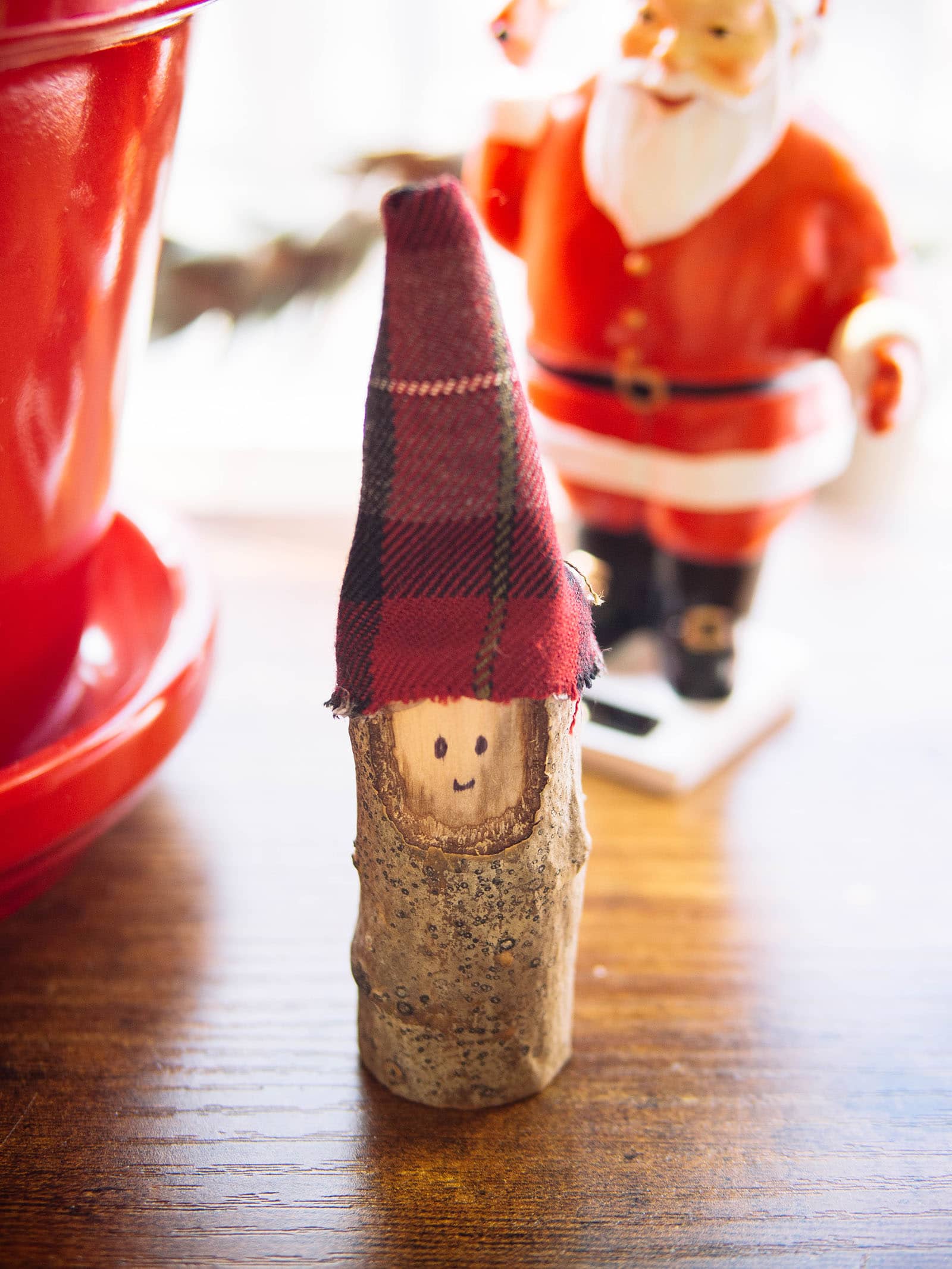
I think it’s such a fun craft to do with kids in winter, since all you need is a pile of twigs from your old Christmas tree and some imagination on a rainy day! You can even create a whole village for your twig gnomes by building fairy houses, swing sets, benches, and chairs out of sticks, stones, and other outdoor treasures.
This post updated from an article that originally appeared on December 28, 2020.
View the Web Story on what to do with an old Christmas tree.


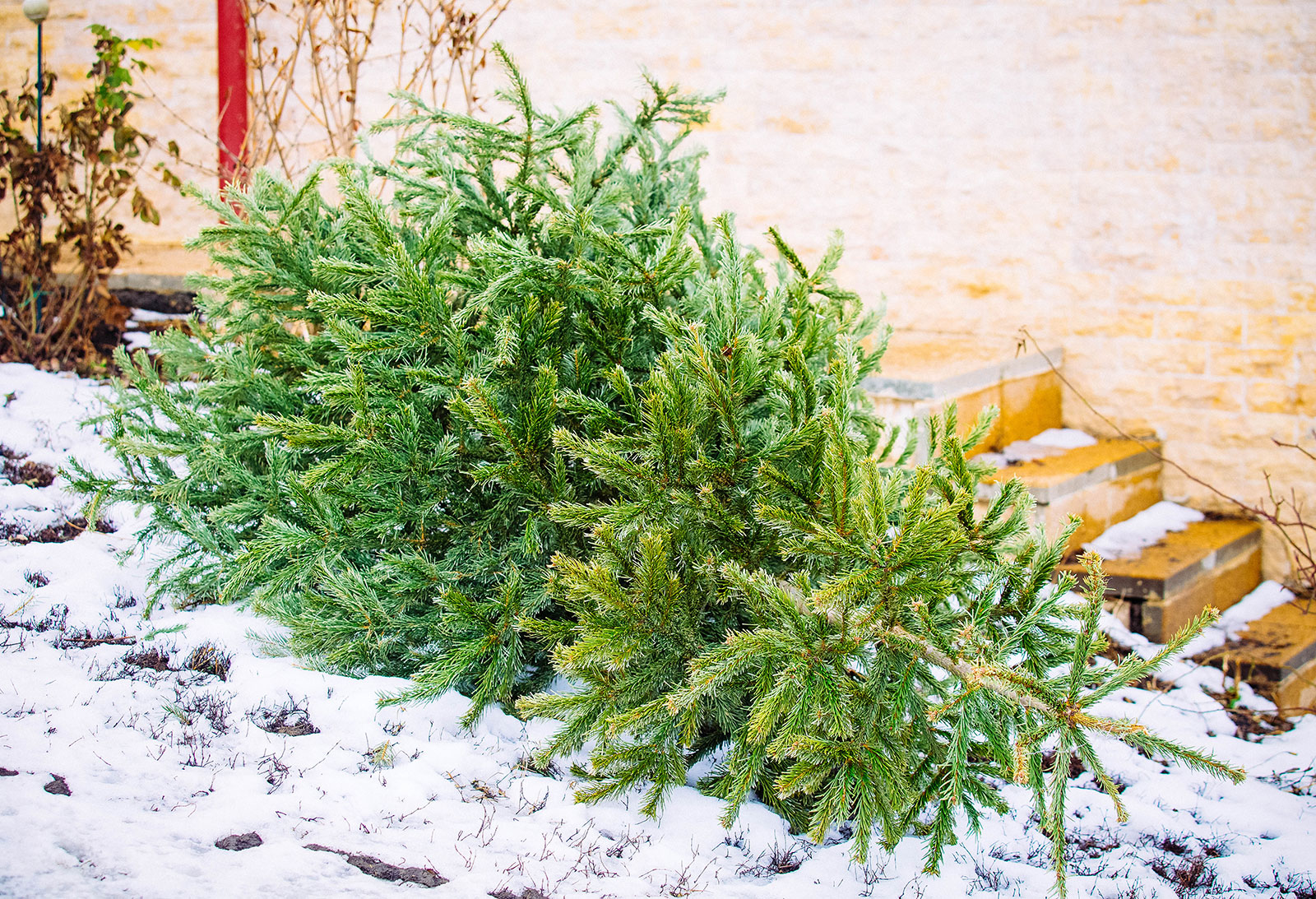













I put Christmas tree branches in bottom of trash can. Trash goes into bag inside can but branches make can smell SO NICE!
Great idea!
Goats love pine trees. If you have, or know of someone who has, goats they’ll enjoy munching on the trees. Just remember to take all decorations off and don’t give it to them if it’s been treated with color, etc.
Hi, Linda. I love all of these and agree, but I want to warn you against letting your particular tree dry out for months. You now live in a high-risk fire zone. Dry conifers go up like little bombs, so you’ll want to get those needles under snow or soil ASAP. Snow is harder to get delivered on demand. 🙂
Interesting thing – in Portugal, there’s a not-for-profit that picks up trees that are being taken down by the forest service, rents them to businesses for xmas trees and then takes them back to the forest service, who turns them into mulch. I love a circular economy!
In winter, fire isn’t really a risk here since everything is frozen in Central Oregon. I can’t say that for other areas however.